Candy-Glazed Wide-Cut Pork Ribs: Recipe and Temps for Meaty Bites
We love ribs and will never tire of trying new ways to prepare them. With Halloween on the horizon, something that is both candy-like and monstrously meaty sounded great, so we decided to smoke up some sticky/shiny extra-wide ribs.
Following the lead of Jeff Phillips at smoking-meat.com, we tried this method out, and it was fantastic! We loved how meaty each rib was and how the glaze almost stuck between our teeth. How does one make such glorious BBQ ribs? Read on to get the temp tips and know-how you need for this fantastic fall treat.
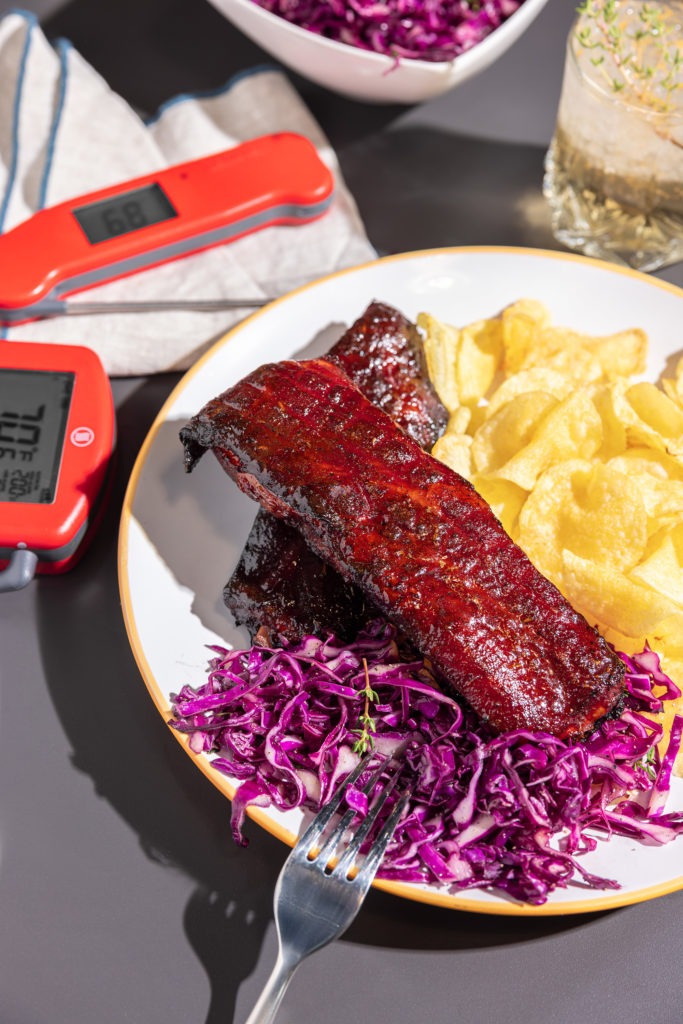
Contents:
- How to make extra-wide ribs
- Seasoning the ribs
- Cooking temps for extra-wide ribs
- “Candy” coating the ribs
- Extra-wide candied rib recipe
How do you get extra-wide ribs?
First, you may be asking yourself what the heck we’re talking about. Rib width is a function of animal genetics, not marketing choices, right? Do extra-wide ribs come from extra-long pigs? No, of course not; no one has bred that pig yet. We can’t control anatomy, but we can control how we use it.
Extra wide ribs come from a bit of creative cutting—and they are individually cut. Starting from the square end of the rack of ribs (which we will hypothetically position on our left, for ease of description), you cut on the inside (the right) of the first bone right up against the bone. Then we skip a whole bone and cut against the next rib, on its left edge. The next cut is against the same bone on the right side. This is repeated down the rack.
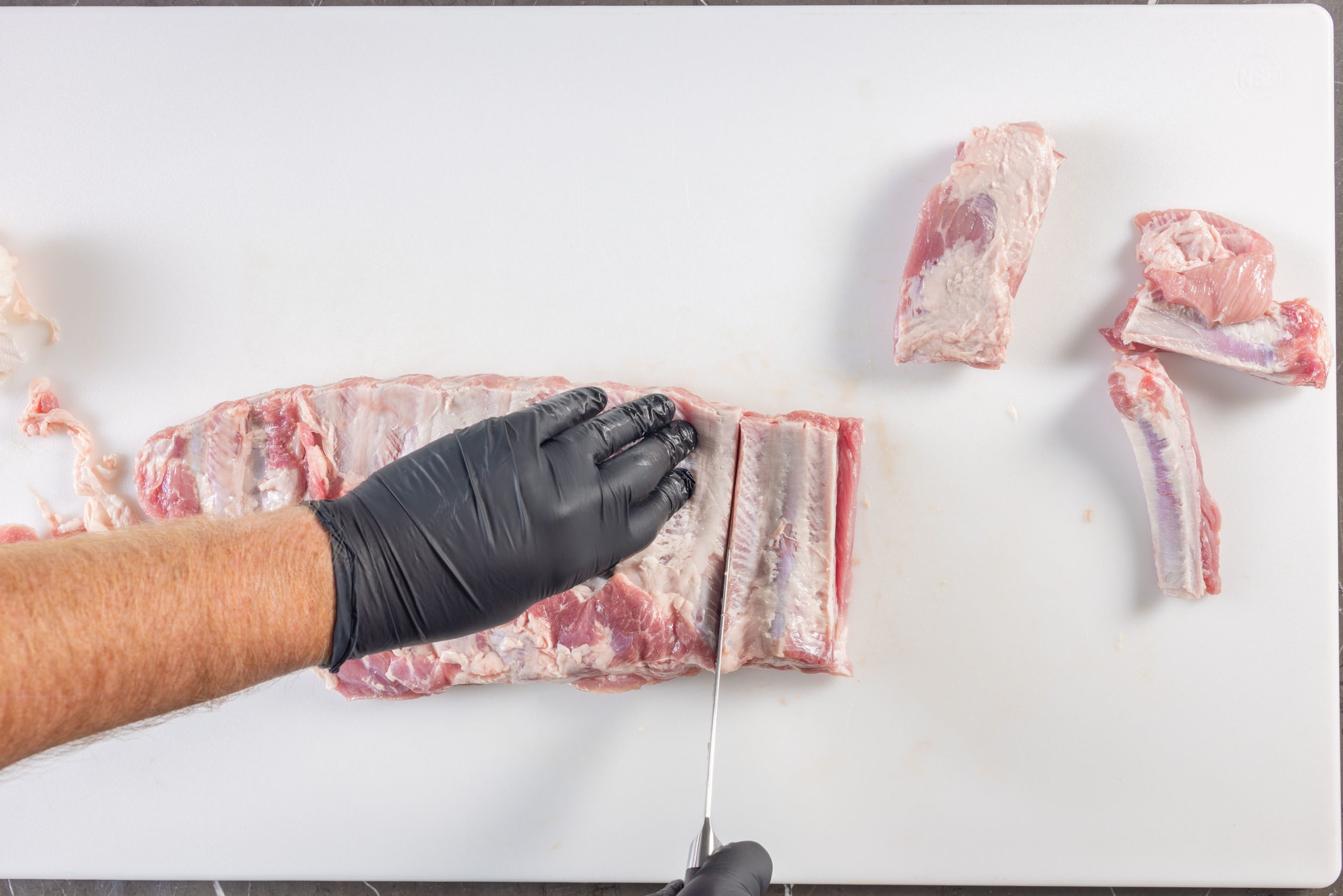
Usually, when we cut ribs, we cut them as close to the middle of the meat between the bones as we can, creating even cuts. But in this case, we create about 6 bones with meat wings that extend out to their neighbor. We also end up with a bunch of bones with very little meat on them. Don’t throw those out! Roast them and use them for some killer pork stock or boil them in a delicious pot of beans.
Seasoning the ribs
What we’re looking for on thises ribs is some serious flavor, so we’re going to start getting that flavor into them yesterday. Yes, we’re going to season these ribs the day before we cook them.
Once the ribs have had their membrane removed and have been cut, we apply a binder. We used a sweet barbecue sauce, but if your cooker puts a lot of heat on the bottom of your ribs, that might burn. Consider switching to mustard if your cooker does that.
With our binder on, it’s time to hit the ribs with your choice of rub. We liked something a little on the spicy side for this, which works well when you later apply a sugary glaze to the meat. Again, if your cooker has a hot bottom, maybe stick with something less sweet. (Or use something sweet on the top of the ribs and something without much sugar on the bottoms—flavor layering!) The ribs are then put in the fridge on a rack set into a sheet pan. and left uncovered to dry-brine overnight.
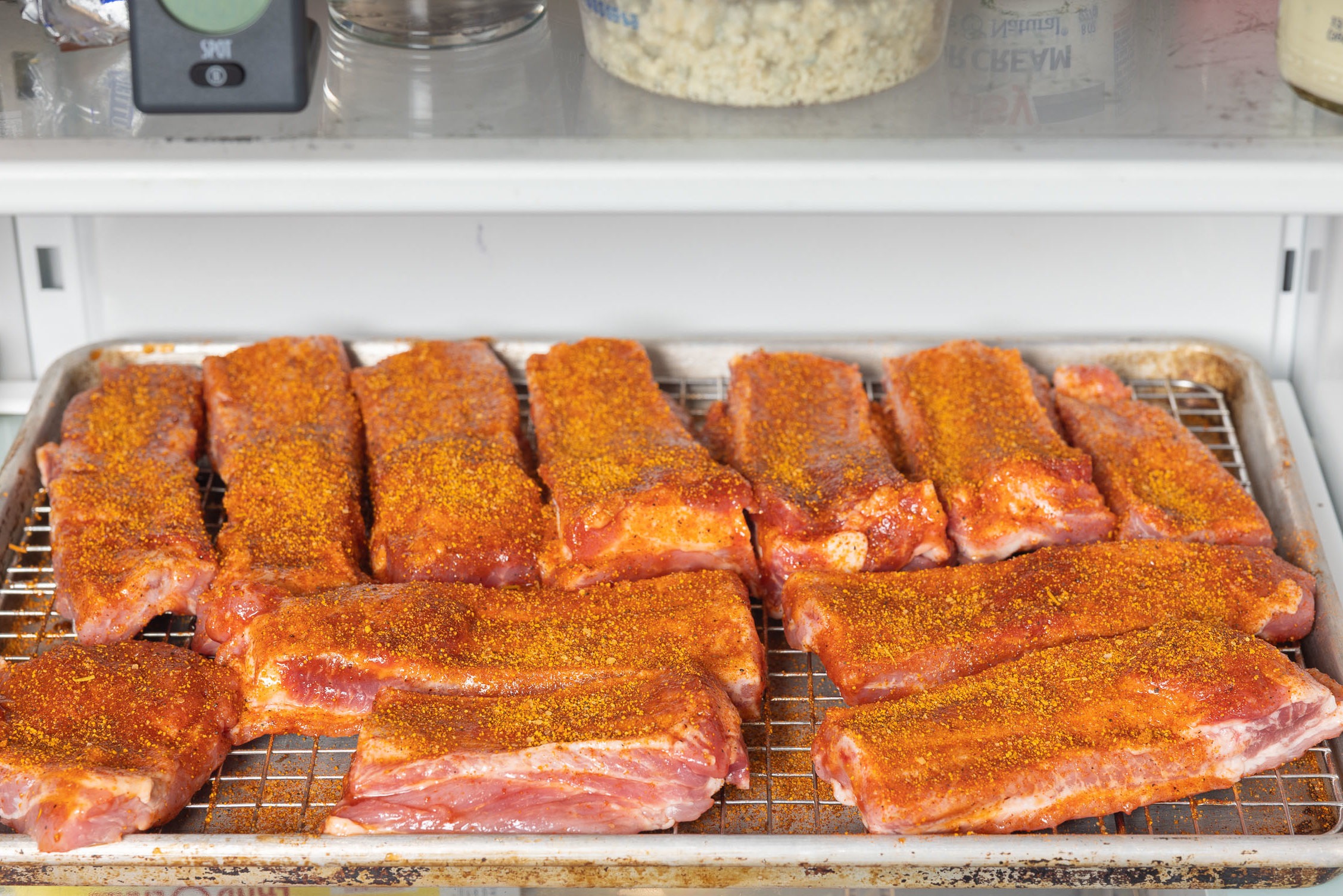
If you want to cook these today, you can, but they are better with an overnight sit—and the bark forms up like a dream with the proteins that are drawn from the meat overnight.
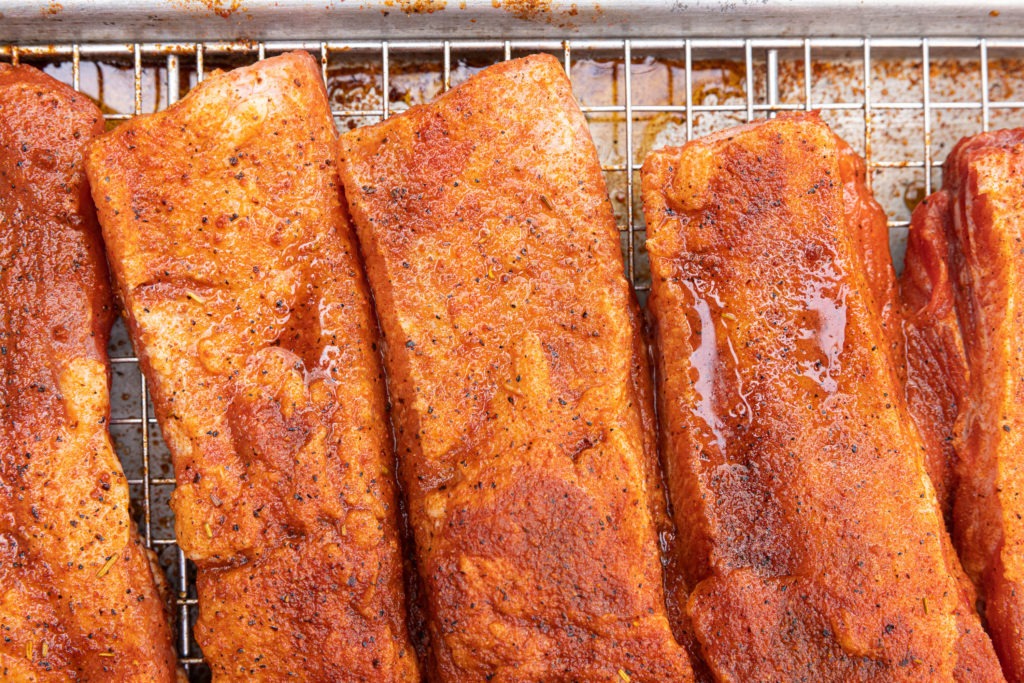
Cooking temps for individual ribs
Because these ribs are cooked individually, they allow heat into the meat more easily than a whole rack does. That means we can cook them at a lower temperature—for better smoke flavor—and still get them done more quickly. We loaded our Kamado-style cooker with charcoal and set our Billows™ BBQ Temperature Control Fan for 225°F (107°C) using our Smoke X2™ thermometer, fed it a chunk of applewood, and ran it at that temp the entire cook. And we were done in about four and a half hours. That temp is perfect for this application, so dial it in on your Billows and let it keep your fire going for you.
Extra-wide rib pull temp
The pull temp is an interesting question on this cut of meat. They will certainly stall out—ours sat between 150 and 165°F (66 and 74°C) for at least two hours—but they don’t need to go all the way up to 203°F (95°F) like a brisket does. A temperature closer to 195–200°F (91–93°C) is about right, but there is a small hitch in that thermal journey. After about 4 hours of cooking, your ribs should be in the neighborhood of 185°F (85°C), and that’s when we glaze them (see below for more on that). The addition of a water-based glaze that can evaporate not only stops our rib temp from climbing but actually decreases it. Aas the water in the glaze evaporates, it pulls heat from the ribs, cooling them. Use your Smoke X2 to track the temp as you go.
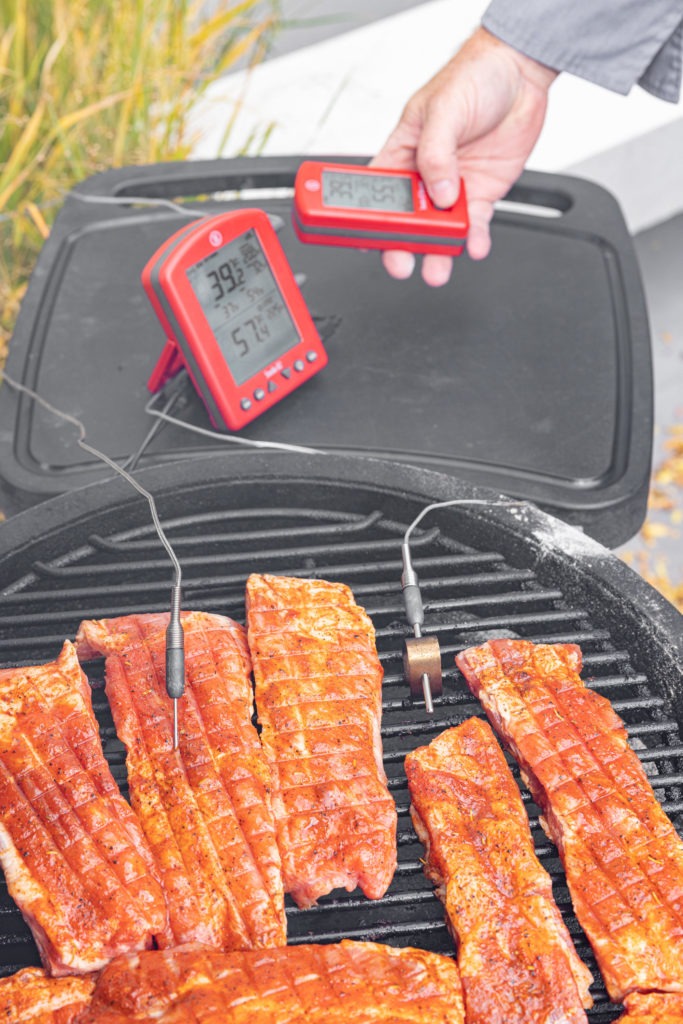
So while we’re looking for a finish temp of 195–200°F (91–93°C), just know that the road to that temp is not a straight line. Use your Thermapen® ONE to verify the temperature and tenderness before you pull them off the smoker.
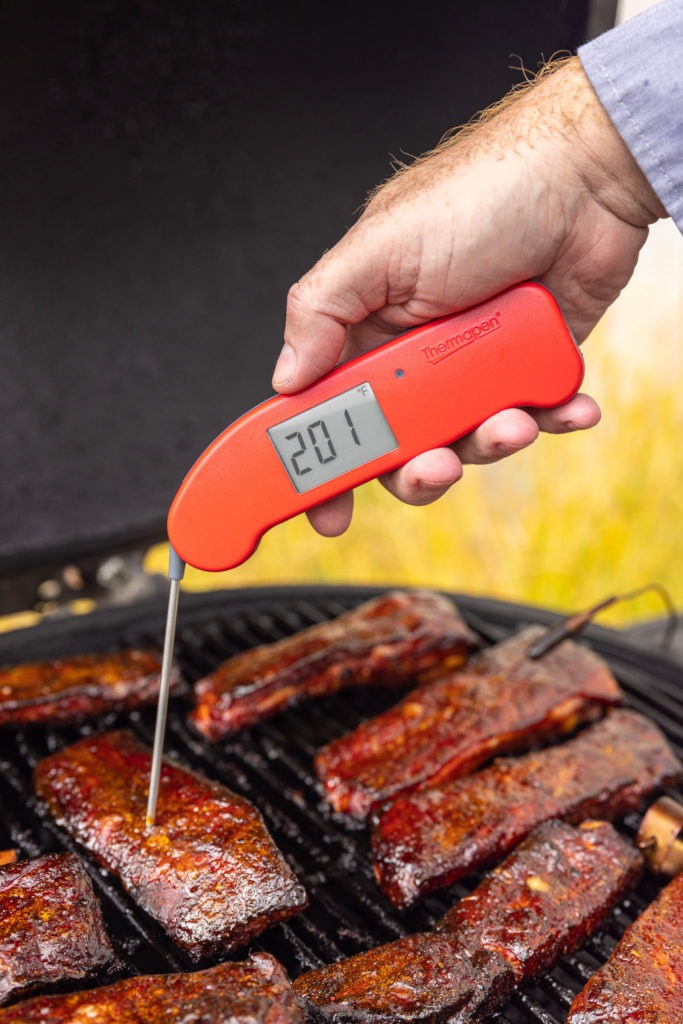
“Candy” coating the ribs
As we said above, these ribs are sticky. We’re talking candy, sticking to your teeth, pardon-me-while-I-go-wash-my-hands sticky. And we love them for that! To make the glaze, use about two parts barbecue sauce and one part something syrupy. Honey will do great; slightly reduced maple syrup would not be amiss. We used some Rib Candy™.
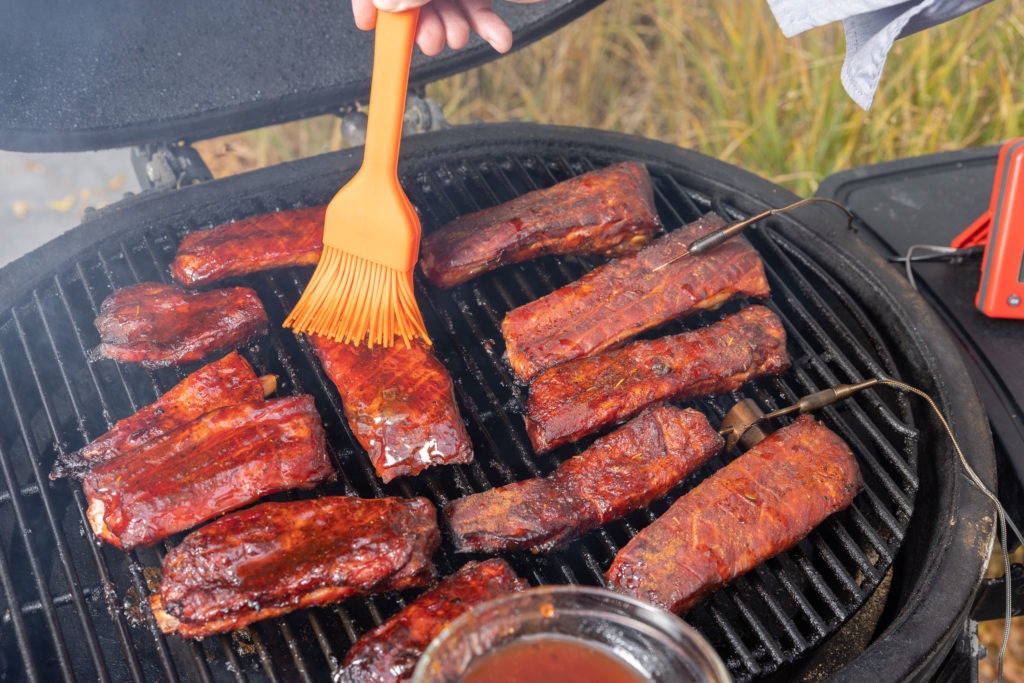
Whatever you use, apply a good coating of the mixture to your ribs when they reach about 185°F (85°C), about four hours into the cook. (A silicone brush is ideal for saucing the ribs.) Sauce both sides of the ribs and then let them cook for about another 40 minutes. The ribs should get back up to about 195°F (91°C) in that time, but even if they don’t they will have spent enough time in the collagen-melting zone to make them beautifully tender. Once the sauce is well-set and the ribs look like lacquered mahogany, take them off the heat and get to eating!
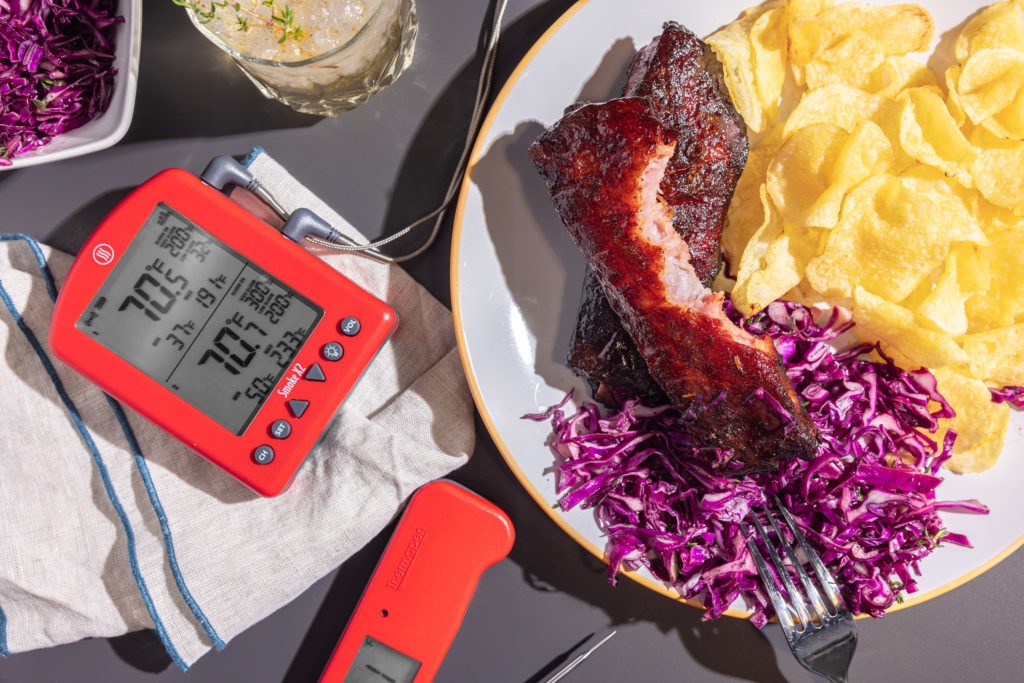
Whether you’re making these for a treat to eat as you pass out candy, or just because they’re delicious, you’re going to love them. And, aside from the overnight brine, it sure doesn’t hurt that they’re done as fast as they are! With the help of Billows and Smoke X2, you can cook them to perfection every time you make them. Enjoy them, and share them with your friends!
Print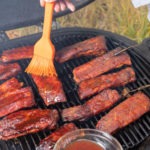
Candy-Glazed Wide-Cut Pork Ribs Recipe
Description
Wide-cut ribs, glazed until candy-like. Adapted from the method presented by Jeff Phillips at Smoking-meat.com.
Ingredients
- 2 racks of St. Louis-style ribs
- 3–4 Tbsp BBQ rub
- Salt, if your rub isn’t salty enough
- 1/2 C barbecue sauce, divided
- 1/4 C Rib Candy or another syrupy sauce (honey, thickened maple syrup, etc)
Instructions
Day before cooking
- Remove the membrane from the back of the ribs by loosening it with a knife at one end and pulling it free, gripping it with a paper towel.
- Cut the ribs into wide ribs by cutting on the right side of the left-most bone, then the left side of the third bone, then the right side of that same bone, etc. Save the extra bones for another use.
- Use about 2–3 Tbsp of BBQ sauce to brush each rib, front and back. This is your binder. (Sub mustard if it suits your smoker or tastes better.)
- Liberally season the ribs with BBQ rub on all sides.
- Refrigerate the ribs overnight, uncovered, on a rack set into a baking sheet.
On the day of cooking
- Preheat your smoker. Install Billows and use the air probe from your Smoke X2 to set the temperature to 225°F (107°C).
- Place the ribs in the smoker, and insert the meat probe from your Smoke X2 (we used the optional 2.5″ needle probe) into one of your biggest ribs. Set your high-temp alarm to 200°F (93°C) on your meat channel. Cook the ribs.
- After 4 hours, glaze the ribs with a mixture of the reserved BBQ sauce and the syrup. Continue to cook for about 40 more minutes.
- Check the internal temperature and the tenderness of your ribs with your Thermapen ONE. If they’ve hit 195°F (91°C), they’re probably appropriately tender. (Tenderness is a matter of taste; adjust your pull temp to your liking, then write it down!) Pull from heat.
- Serve!
For more on rib cookery, take a look at this post on baby back ribs.
Shop now for products used in this post:


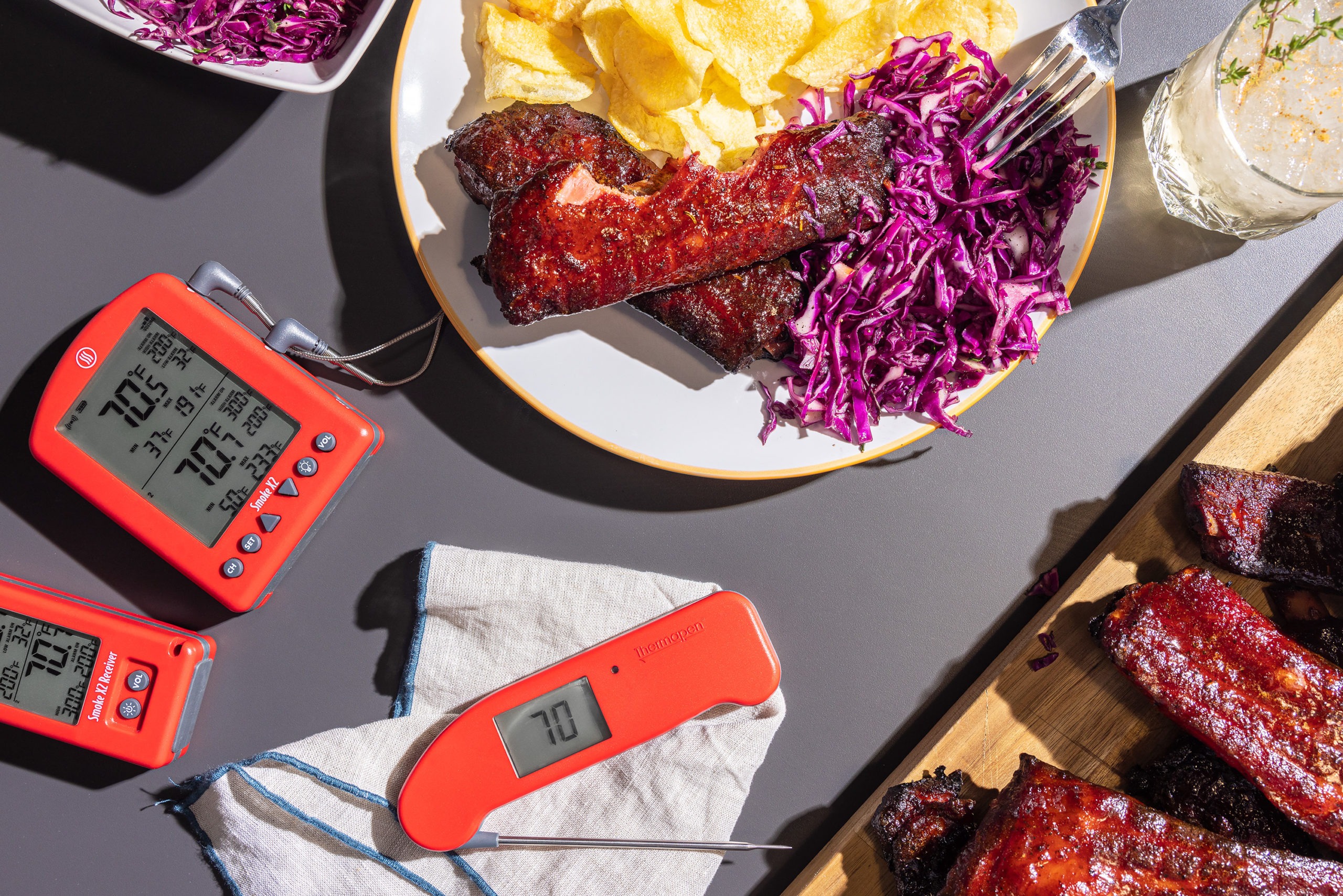
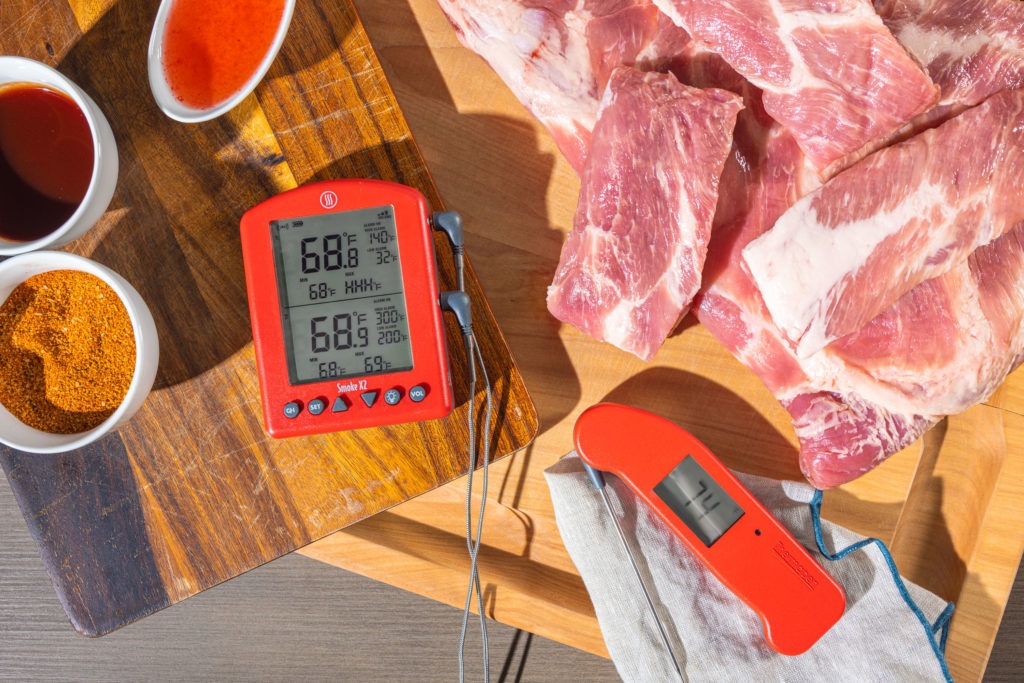

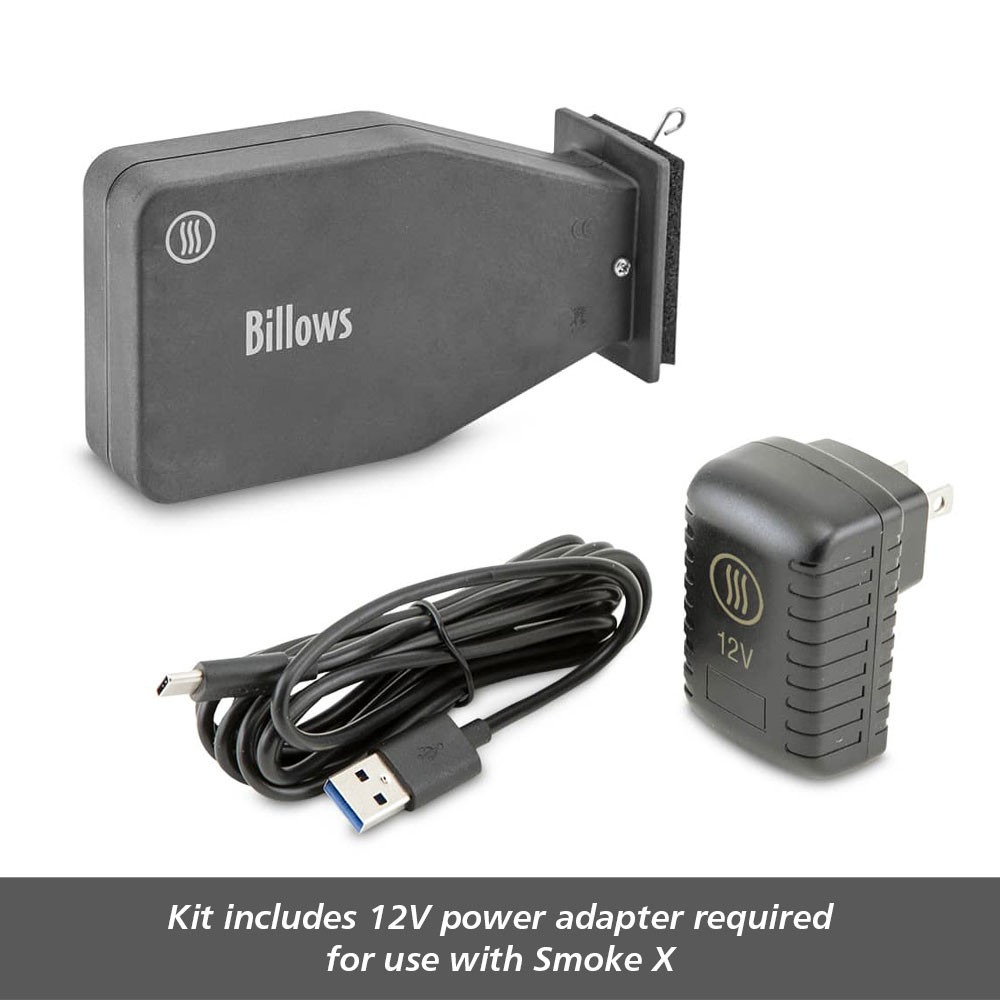
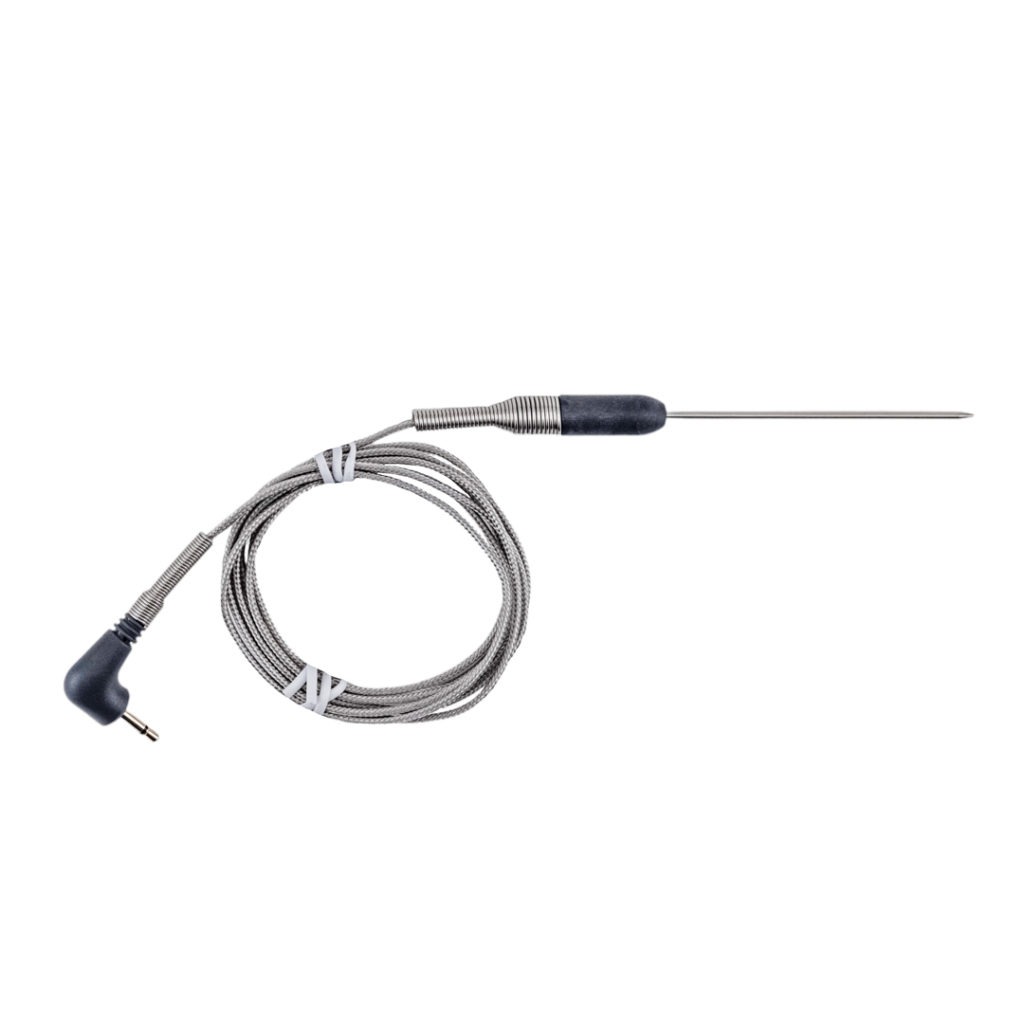

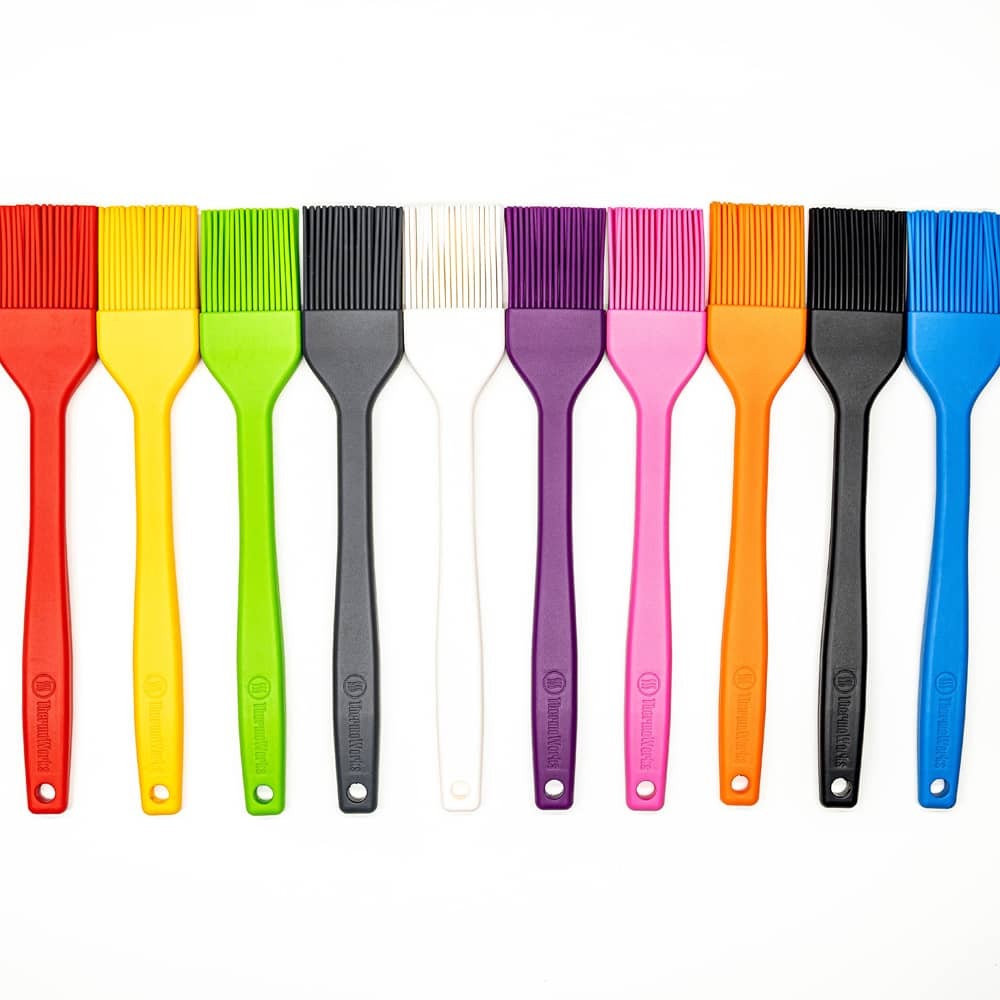
The rib recipe looks delicious, but I’m also interested in the red cabbage recipe. It doesn’t look like it’s “just” boiled, it appears to be crisp with some thyme in it or maybe a little white balsamic vinegar?
Cheese, sorry for the long wait on the response!
That cabbage is a simple cabbage slaw: Thin shredded cabbage, 2 parts sugar for every part salt, a good hit of rice vinegar, black pepper. The walt and sugar draw out the moisture and ease the texture a bit. I made it on the fly and wasn’t measuring super carefully, so I’m afraid I can’t be much more specific!